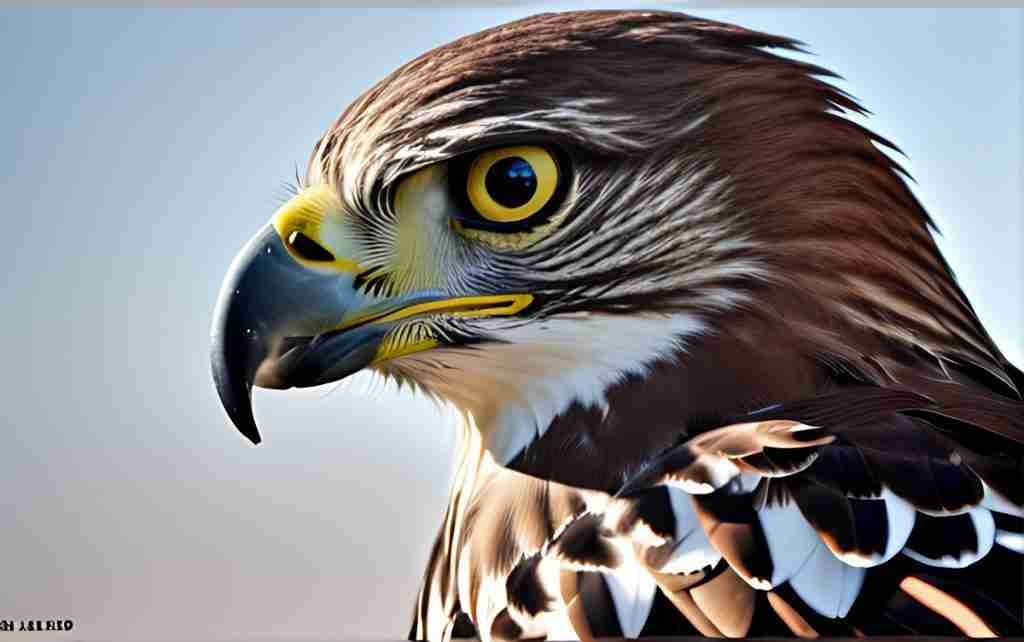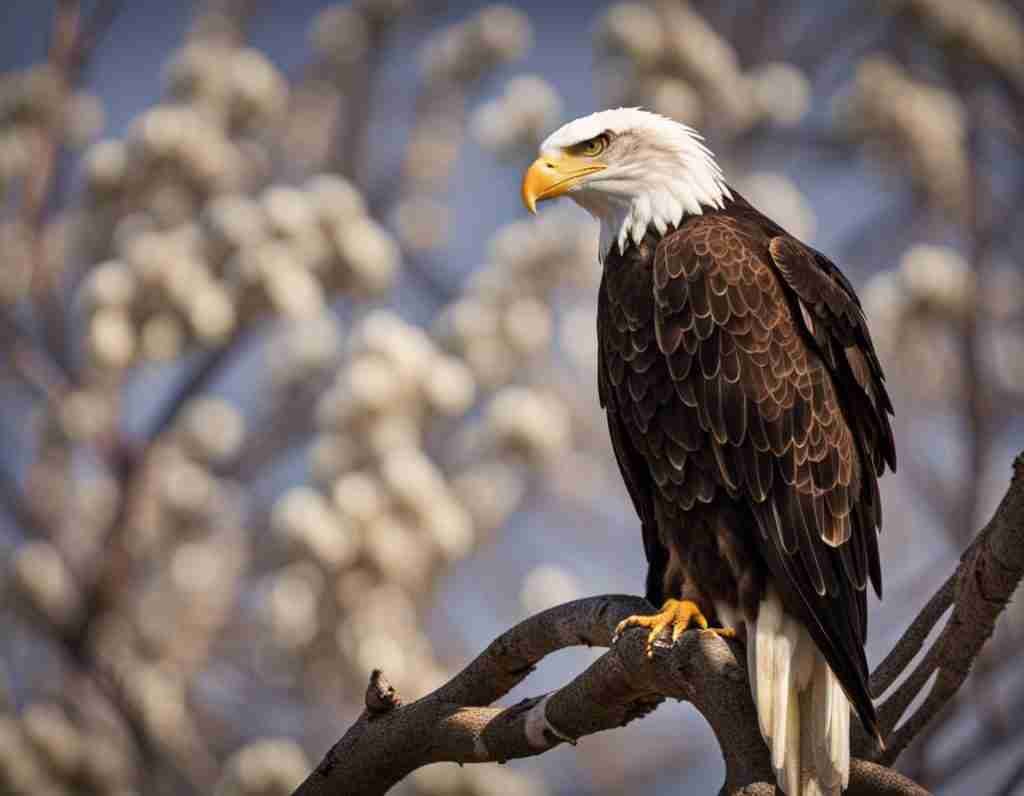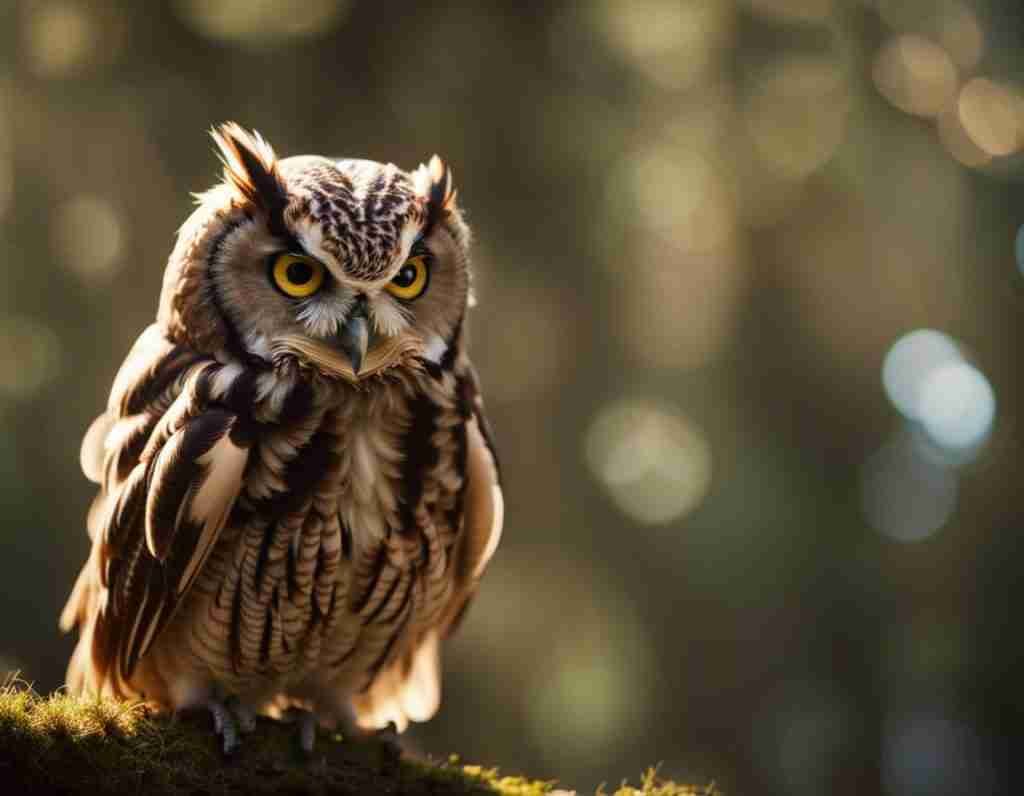[et_pb_section fb_built=”1″ _builder_version=”4.16″ global_colors_info=”{}”][et_pb_row _builder_version=”4.16″ background_size=”initial” background_position=”top_left” background_repeat=”repeat” global_colors_info=”{}”][et_pb_column type=”4_4″ _builder_version=”4.16″ custom_padding=”|||” global_colors_info=”{}” custom_padding__hover=”|||”][et_pb_text _builder_version=”4.23.1″ _module_preset=”default” admin_label=”Intro” hover_enabled=”0″ sticky_enabled=”0″]
If you’ve ever been intrigued by the majesty and intensity of raptors, you’re in the right place. In this comprehensive guide, you’ll get to explore the fascinating characteristics of these predatory birds. As a seasoned bird expert, I’m here to unpack and present the distinct traits that make these birds true wonders of the animal kingdom. We’ll be demystifying everything from their awe-inspiring hunting techniques to their unique physical attributes. Let’s embark on this journey of understanding raptors from a whole new perspective.
[/et_pb_text][pac_divi_table_of_contents _builder_version=”4.23.1″ _module_preset=”default” default_state=”closed” included_headings=”off|on|on|off|off|off” level_markers_3=”whole” hover_enabled=”0″ sticky_enabled=”0″][/pac_divi_table_of_contents][et_pb_text _builder_version=”4.23.1″ background_size=”initial” background_position=”top_left” background_repeat=”repeat” hover_enabled=”0″ global_colors_info=”{}” sticky_enabled=”0″ admin_label=”Content”]
Defining Raptors
Raptors, a term you may have heard primarily in relation to jurassic creatures, actually comprises a fascinating group of bird species in our own era. The term “raptor” comes from the Latin verb “rapere,” which means “to seize or capture.” This is the fundamental characteristic that unites the wide range of birds referred to as raptors.
Raptors in Context
You see, raptors aren’t a separate classification in the ornithological world. Rather, it’s an overarching term that embraces several species of birds, all of which have similar hunting characteristics. Eagles, hawks, falcons, owls and even vultures are among those sharing the raptor status.
Classifying Raptors: What Makes a Bird a Raptor
A raptor, or birds of prey, are characterized by their strong, hooked beaks and sharp talons which they use to capture and tear apart their prey. They are carnivorous and often have excellent eyesight, making them skilled hunters. Having any of these traits doesn’t automatically classify a bird as a raptor, they need to possess them all.
Anatomy of Raptors
The anatomy of raptors is a fascinating study of nature’s engineering. Each feature is beautifully adapted to create an expert hunter.
Specialized Beaks of Raptors
Take their beaks, for instance. Raptors are known for their strong, hooked beaks that they use not just for capturing prey, but also for tearing it apart. These beaks provide the necessary cutting force to get through the tough skin and muscle of their victims.
Raptors’ Talons: Adapted for Hunting
Their feet, too, play a significant role in their hunting prowess. Consider the talons of raptors which are not only sharp, but also strong and precisely adapted for clutching onto their prey. The power in their talons are such that in one fell swoop, they can pick off their meal from the ground or even mid-air.
Size and Body Structure of Raptors
Mention raptors, and the mind’s eye might conjure up images of large, powerful birds. While this is often correct, it’s also true that raptors come in many sizes, from the small American Kestrel to the impressive Golden Eagle. Their size and body structure is generally adapted to their hunting needs and environmental circumstances.
Eyesight of Raptors: Built for Predation
There’s a good reason the phrase “hawk-eyed” has made it into the common lexicon. Raptors are designed with incredibly acute vision, which aids them in spotting potential prey from a distance. Their keen eyesight can spot a mouse from over 100 feet in the air!
Raptor Behavior
The behavior of raptors are far from a monolith and they display a varying range of instincts and habits.
Hunting Tactics and Strategies
Raptors employ different hunting strategies based on their species and type of prey. Hawks might depend on speed and a stealthy approach, eagles rely on their strength, while falcons use high-speed chases to exhaust their prey. Each raptor species has honed its hunting tactics to effectively catch and subdue their food.
Nesting and Reproductive Behavior
Raptors’ nesting habits are also worth noting. Eagles, for instance, use the same nest for years, adding to it every mating season until it becomes an impressive structure indeed. Hawks, on the other hand, might build a fresh nest each year. Nesting is an important behavior as it directly ties to breeding and the replenishment of these incredible species.
Migration Patterns of Raptors
Migration patterns of raptors are typically determined by weather patterns and food availability. Some raptors, like the Peregrine Falcon, traverse long distances between their summer and winter habitats, while others, like Red-Tailed Hawks, may not migrate at all if food is readily available year-round.
Communication Among Raptors
With a language of their own, raptors use a variety of calls, body moves, and other signals to communicate with each other. These communications could be about territory declaration, mating calls, or simply expressing their emotional state.
Raptor Habitats
Raptors thrive in a wide variety of environments, from the snowy tundras to sweltering deserts.
Habitat Selection and Adaptation
The choice of habitat of a raptor often depends upon the food available in the region and the nesting sites possible. Their sturdy biology enables them to adapt to an array of environments, however, the specific adaptations can vary significantly based on the species and location.
Geographical Distribution of Raptors
Raptors are found all over the world, thriving in almost every type of landscape. You’ll observe them in forests, mountains, prairies, marshes, deserts, and even urban areas. Their exceptional adaptability is part of what makes them remarkable survivors.
Raptors in Urban Areas
An interesting phenomenon recently is the increase of raptors in urban areas. Many species have found ways to adapt to city landscapes, hunting pigeons and apartment-dwelling rodents, and utilizing tall buildings for nesting.

Raptors and Their Diets
Diet plays a substantial role in the lives of raptors, shaping their behavior and habitats.
Dietary Preferences and Needs
Being birds of prey, raptors indulge in a carnivorous diet. Some like the Peregrine Falcon prefer birds, while others like the Red-Tailed Hawk don’t mind feasting on rodents. Their dietary preferences often depend on the prey available in their habitats.
Feeding Habits and Techniques
Their feeding techniques are often a sight to behold. Raptors employ different forms of attacks for hunting, varying from high-speed chases to silent swoops, depending on their bodily adaptations and the nature of their prey.
Impact of Diet on Raptor Species
The diet of a raptor can significantly impact its lifestyle, habitat preference, and even its physical traits. Food scarcity also plays a vital role in their migration patterns.
Raptor Conservation
Raptor conservation is an important aspect of maintaining our ecosystems, given their role as apex predators.
Threats to Raptor Populations
Raptors face a gamut of threats, the main ones being habitat loss and pollution. Additionally, illegal hunting and the use of harmful pesticides continue to reduce their numbers drastically.
Importance of Raptors in Ecosystems
Playing a crucial role in balancing the ecosystem, raptors help in controlling rodent populations and other pests, which indirectly benefits farming and forestry. By preying on sick or weak animals, they ensure the overall health and vitality of various species.
Current Conservation Efforts
Many pieces of legislation and non-profit organizations are now working towards protecting raptors. Monitoring programs, habitat protections, and educational resources all contribute to these conservation efforts.
How You Can Help Protect Raptors
You can also contribute to raptor conservation by supporting organizations that work towards their protection. Also, being a responsible outdoors enthusiast, refraining from using harmful chemical pesticides, and educating others about these magnificent birds can significantly aid in their preservation.
Need some Binoculars to view the Raptors?





Raptor Species Around the World
Raptor species are scattered all around the globe, each unique in its own way.
Eagles
Eagles, often symbolized for their power and majesty, are large birds of prey found in Eurasia, North America, and Africa. They are known for their strength and exceptional hunting skills.
Falcons
Falcons, recognized for their exceptional speed, are often smaller than eagles but no less formidable. The Peregrine Falcon, one of the most widespread raptor species, has been clocked at speeds exceeding 200 miles per hour.
Hawks
Hawks are medium-sized birds of prey known for their keen vision and agile hunting abilities. Species are found across the globe, with a wide range of variation in size and color.
Owls
Owls are a fascinating group of raptors that have adapted to nocturnal hunting. Armed with silent flight and exceptional night vision, owls are superb rodent hunters.
Vultures
Vultures, mostly scavengers, have a crucial role in the ecosystem, helping clean up carrion and prevent the spread of disease. These often misunderstood raptors come in several varieties, from the massive Andean Condor to the smaller but still formidable Black Vulture.
Raptors in Popular Culture and Mythology
Raptors have held a fascination for humanity for thousands of years, influencing our culture and mythology.
Symbolism of Raptors
The symbolism of raptors is extensive. From eagles representing power and freedom, to owls symbolizing wisdom, these birds have a deep-rooted cultural presence.
Raptors in Literature and Film
Literature and film have not been immune to the allure of raptors. They have featured as potent symbols in many fictional works, and even inspired titles, such as the popular film franchise “Jurassic Park.”
Raptors in Folklore and Mythology
In many cultures, raptors hold significant roles in folklore and mythology. Native American tribes often imbued certain raptor species with spiritual significance, while ancient Egyptian and Greek myths often portrayed raptors as messengers of the gods.
Interacting with Raptors
Interacting with raptors can be an exciting prospect but also requires attentiveness to their safety and wellbeing.
Raptor Rehabilitation and Rescue Centers
Raptor rehabilitation and rescue centers do amazing work in treating injured birds and educating the public on raptor conservation. These centers offer a unique chance to see raptors up-close and contribute to their conservation.
Watching Raptors in the Wild: Tips and Guidelines
Watching raptors in the wild can be a deeply rewarding experience. However, it’s important to remember to respect their personal space and not disturb their natural behavior. Always observe from a distance and avoid any actions that would cause unnecessary stress to the bird.
Raptors as Pets: Legalities and Controversies
While the idea of having a raptor as a pet might sound enticing to some, it’s important to remember these are wild creatures and not suitable for domestication. There are legal and ethical considerations regarding keeping raptors as pets, and in most cases, it’s best for them to be left in the wild where they belong.
Professional Raptor Handling and Falconry
Falconry, the ancient art of hunting using birds of prey, dates back thousands of years and presents a unique relationship between humans and raptors.
Brief History of Falconry
Falconry, once considered a status symbol among aristocrats, has been practiced for over 4000 years. Over time, it has transformed into a sport and practice appreciated by many, even if the necessity of hunting with raptors is now all but redundant.
Modern Practices of Falconry
In modern times, falconry is mostly practiced as a hobby and is much more focused on the care and training of the birds rather than their use in obtaining prey.
Training and Maintaining Raptors in Falconry
The training of raptors in falconry requires a lot of time, knowledge and patience. The birds are never truly tamed and must be looked after with great care to ensure their health and happiness.
Ethical Aspects of Falconry
Ethically, falconry is a contentious subject. While it is heavily regulated and birds can not be taken from the wild unless for conservation or rehabilitation purposes, it is nonetheless seen by some as an unnecessary exploitation. As lovers of these grand birds, it’s important to consider an empathetic and caring approach towards them.
[/et_pb_text][/et_pb_column][/et_pb_row][/et_pb_section]





